LMU 146 – A Comprehensive Approach to Mental Health and Addiction: The Transtheoretical Model
Source: Dual Diagnosis: An Integrative Approach (Watkins TR, Lewellen A, Barrett C. (Sage Publications)
Lifestyle Medicine Update (October 3, 2019)
Introduction:
When it comes to managing stress, burnout, mental health issues like depression and anxiety, or addiction problems, the solutions are often more complex than simply relying on pharmaceutical medications. In 1984, two prominent psychotherapy researchers, Prochaska and DiClemente, introduced the Transtheoretical Model, a groundbreaking approach that has since become a cornerstone of counselling and peer support within the psychotherapy realm. This model doesn’t just pertain to addiction but also plays a crucial role in addressing stress, burnout, and various mental health challenges.
In this article, we will explore the ten core processes of the Transtheoretical Model and how they contribute to comprehensive management. We will also delve into the five levels of intervention, providing a holistic understanding of this powerful therapeutic approach.
Section 1: The 10 Core Processes
Consciousness Raising
The first step towards change is increasing one’s awareness. Consciousness raising involves helping individuals recognize the impact of their behavior on their mental and functional state, as well as on their relationships with others. It’s about shedding light on the consequences of their actions, fostering self-awareness, and understanding how these behaviors affect their overall well-being.
Self-Liberating
Self-liberation is about breaking free from victimhood. It empowers individuals to understand that they have choices and are not passive victims of their mental health or substance abuse issues. By realizing they have agency and can make positive choices, they can embark on a path of transformation.
Social Liberation
Creating a supportive social environment is vital for recovery. Social liberation involves helping individuals build a network that offers constructive ways to meet their needs. This might include surrounding oneself with a positive social circle, seeking peer support from those who have overcome similar challenges, and accessing resources within their community that promote well-being.
Counterconditioning
Counterconditioning revolves around unlearning destructive behaviors. For those dealing with substance abuse, it means replacing drugs or alcohol with healthier alternatives like exercise or meaningful activities. In the context of mental health, it involves substituting symptomatic behavior with more socially appropriate responses. It’s all about recognizing the trigger-response pattern and consciously choosing a more positive reaction.
Stimulus Control
Stimulus control is about avoiding emotional states or situations that trigger undesirable behaviors. It may involve steering clear of certain friends, environments, or stimuli that threaten emotional stability. By recognizing and managing these triggers, individuals can regain control over their responses.
Self-Re-evaluation
Self-re-evaluation helps individuals appreciate their strengths and weaknesses in light of new insights. It’s about recognizing that they are not defined by their addiction or mental health challenges but have a multitude of positive attributes and talents worth nurturing.
Environmental Re-evaluation
This process involves recognizing how one’s behavior affects others. It’s about understanding that social rejection in the past wasn’t due to personal dislike but rather stemmed from actions and behaviors that can be changed. This realization can pave the way for healthier relationships with friends, family, and colleagues.
Contingency Management
Changing the consequences of behavior is at the core of contingency management. Many individuals with addiction or mental health challenges have been excused for unacceptable public behavior. Holding them accountable can make such behavior less rewarding and self-reinforcing.
Dramatic Relief
Dramatic relief provides individuals with a safe space to express their frustrations and emotions openly. It’s often a cathartic moment that marks the beginning of change. This release of pent-up feelings allows individuals to confront their issues head-on, free from avoidance tactics or destructive behaviors.
Helping Relationships
A strong therapeutic bond between the individual and their therapist is crucial. This one-on-one support and encouragement can make all the difference in their journey towards positive change. Feeling understood and accepted is particularly meaningful for those dealing with addiction and mental health issues.
Section 2: The Five Levels of Intervention
Symptoms/Situational
The first level of intervention focuses on immediate stimuli that trigger behavior and their consequences. It deals with the “here and now” and addresses factors that directly influence behavior.
Maladaptive Cognition
This level dives into correcting dysfunctional thought patterns that lead to symptomatic behavior. It addresses the root causes by challenging and reshaping cognitive patterns that contribute to ongoing challenges.
Interpersonal Problems
Interpersonal problems tackle difficulties individuals face when dealing with the world beyond their immediate circle. This may include a lack of social skills, coping mechanisms, or acceptance by society at large. Addressing these challenges is essential for overall well-being.
Family Conflicts
Family conflicts relate to dysfunction within an individual’s intimate circle of family and friends. These conflicts can often trigger and perpetuate symptomatic behavior. Resolving family issues is crucial for sustained recovery.
Intrapersonal Conflicts
This level deals with deep psychological problems rooted in early-life experiences and reinforced by ongoing maladaptive emotional responses. Addressing these conflicts is fundamental to lasting change.
Section 3: A Holistic Approach to Comprehensive Management
In summary, the Transtheoretical Model offers a comprehensive approach to managing addiction and various mental health challenges. It considers where individuals are in their journey, identifies the most appropriate level of intervention, and provides the elements necessary for meaningful change.
This targeted psychotherapy approach, which addresses the whole person, should serve as a foundational aspect of the comprehensive management of addiction and mental health issues. It complements pharmaceutical treatments and is likely to enhance the overall effectiveness of treatment strategies.
When we recognize the importance of these ten core processes and five levels of intervention, we move closer to a more holistic and effective approach to supporting individuals on their path to recovery and mental well-being.
Conclusion
Managing stress, burnout, mental health problems, and addiction requires a multi-faceted approach that goes beyond pharmaceutical treatments. The Transtheoretical Model, with its ten core processes and five levels of intervention, provides a comprehensive framework for addressing these challenges. By acknowledging the whole person and considering where they are in their journey, we can enhance the effectiveness of treatment and support individuals on their path to recovery and mental well-being.
Reference:
Watkins TR, Lewellen A, Barrett C. Dual Diagnosis. Sage Publications Inc. 2001. Pages 6-10.
Eat Smart, Live Well, Look Great,
Dr. Meschino

Dr. James Meschino
ABOUT THE AUTHOR
Dr. James Meschino, DC, MS, ROHP, is an educator, author, and researcher having lectured to thousands of healthcare professionals across North America. He holds a Master’s Degree in Science with specialties in human nutrition and biology and is recognized as an expert in the field of nutrition, anti-aging, fitness, and wellness as well as the author of numerous books.


